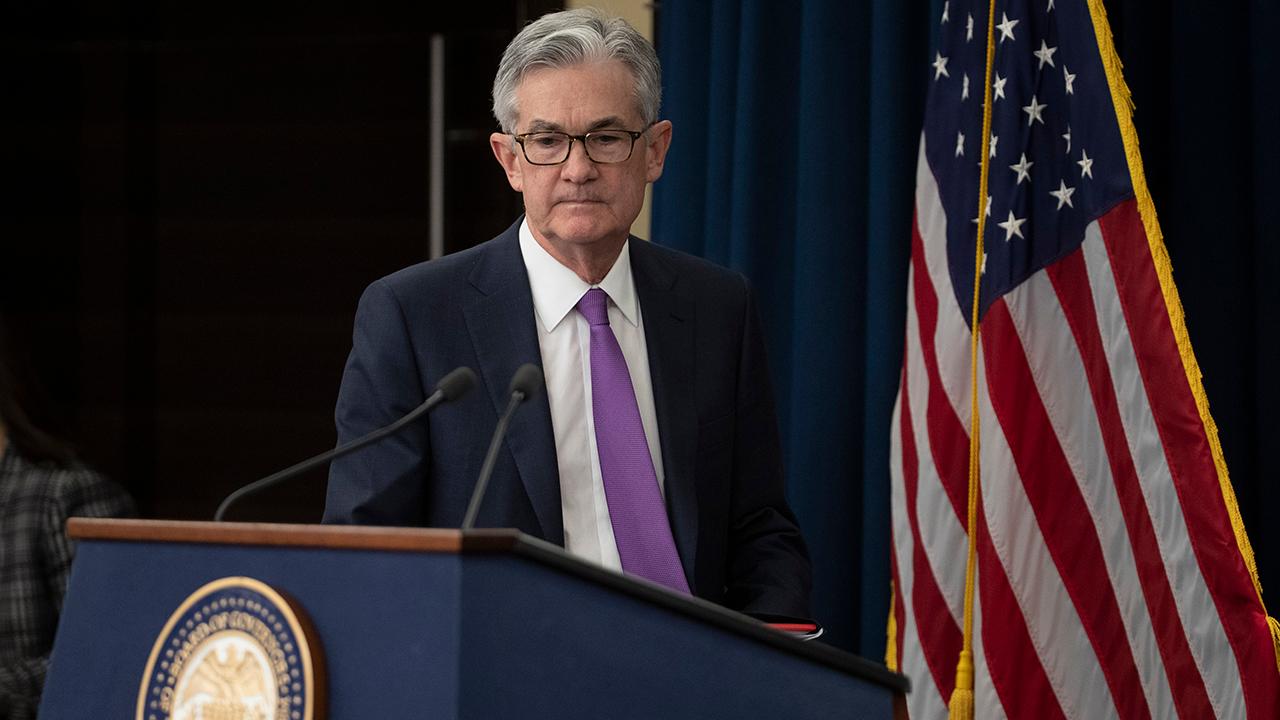Federal Reserve keeps interest rates steady, will be 'patient' going forward
The Federal Reserve unanimously voted to keep the benchmark federal funds rate unchanged during its first policy meeting of the year on Wednesday, while reiterating a patient approach for future hikes.
"We still see sustained expansion of ecnomic activity, strong labor conditions and inflation near 2 percent," Fed Chair Jerome Powell said during a press conference. "But the crosscurrents suggest a less favorable outlook."
U.S. stocks popped higher on the news.
| Ticker | Security | Last | Change | Change % |
|---|---|---|---|---|
| I:DJI | DOW JONES AVERAGES | 48063.29 | -303.77 | -0.63% |
| SP500 | S&P 500 | 6845.5 | -50.74 | -0.74% |
| I:COMP | NASDAQ COMPOSITE INDEX | 23241.990635 | -177.09 | -0.76% |
The move was widely expected, as Powell acknowledged in January investor concerns about a volatile stock market, saying that policymakers at the U.S. central bank were closely watching the economy for signals of a potential slowdown. That sentiment has been echoed by other Fed presidents, who have also preached patience in the approach to monetary policy in the year ahead.
Strong economic data -- the unemployment rate remains near historic lows, and inflation is still hovering around the Fed's 2 percent goal -- indicates the economy will grow at a "solid pace" in the year ahead, Powell said, albeit slower than in 2018.
But he also said that cumulative effects from the U.S.-China trade war; uncertainties surrounding Brexit and economic fallout from a 35-day partial government shutdown in the U.S. warranted a "patient wait-and-see approach" regarding future rate decisions.
Some of the crosscurrents we’ve seen may be with us for a while
"In light of global economic and financial developments and muted inflation pressures, the Committee will be patient as it determines what future adjustments to the target range for the federal funds rate may be appropriate to support these outcomes," the FOMC statement said.
Despite the emphasis on a "patient" approach in 2019, experts believe there's still room for up to two interest rate hikes, if growth remains above potential.
"Hikes would occur later in the year, perhaps starting in June if the economy weathers the political risks," said Tendayi Kapfidze, the chief economist at LendingTree. "Overall policy uncertainty is extremely high, and could start curtailing business investment and expansion plans, including hiring, which may lead the economy to slow at a faster rate."
Whether or not there's another round of interest rate hikes could depend on geopolitical turmoil, Kapfidze added, including the possibility of another government shutdown if President Trump and congressional leaders remain at a stalemate over border wall funding.
In mid-December, the Federal Open Market Committee voted to raise interest rates for the fourth and final time in 2018, even as President Trump continued to slam Fed members and most recently urged them to “feel the markets.” At the time, Powell said there was a “fairly high degree of uncertainty” about the future of further rate hikes, but not that rates have effectively arrived at the lower-end range of neutral.
Fed officials also signaled a willingness to end the reduction of bonds it’s holding on its balance sheet, if necessary as first reported by The Wall Street Journal. Policymakers, however, indicated that the runoff rate for the balance sheet will remain at $50 billion per month for now.
In 2017, the Fed began to shrink its $4.5 trillion holdings of bonds and other assets, known as its balance sheet, which was expanded during the financial crisis and used to pump banks with money bought as bonds. With an unprecedented amount of holdings, the Fed was able to push down long-interest interest rates.
CLICK HERE TO GET THE FOX BUSINESS APP
Although they initially indicated the process could take years -- the balance sheet has since decreased to $4.01 trillion -- the latest discussions suggest the runoff could end much quicker than originally anticipated.




















